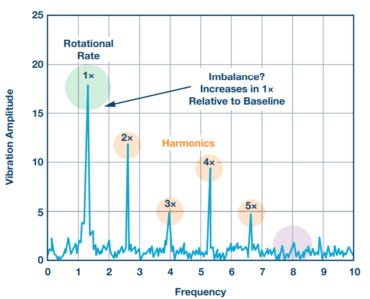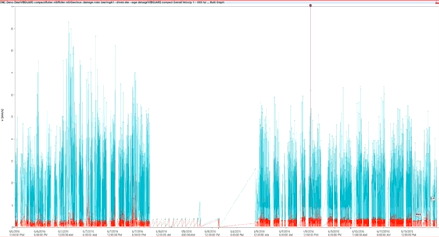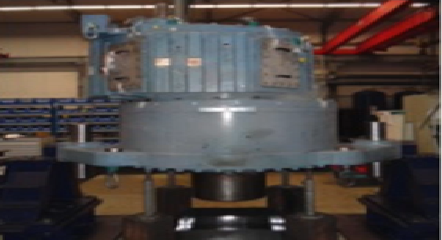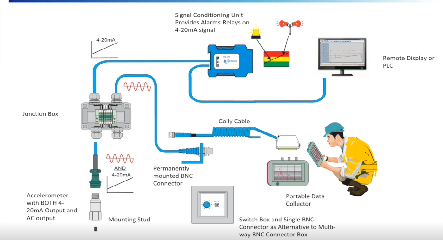What is imbalance and what causes it?
Imbalance is an unequal distribution of mass that causes the load to shift the center of mass away from the center of rotation. System imbalances can be attributed to improper installations such as coupling eccentricity, system design errors, component faults, and even accumulation of debris or other contaminates. As an example, the cooling fans built into most induction motors can become unbalanced due to an uneven accumulation of dust and grease, or due to broken fan blades.
Why is an unbalanced system a concern?
Unbalanced systems create excess vibrations that mechanically couple to other components within the system such as bearings, couplings, and loads—potentially accelerating the deterioration of components that are in good operating condition.
How to detect and diagnose imbalance
Increases in overall system vibration can point to a potential fault created by an unbalanced system, but diagnosis of the root cause of the increased vibration is performed through analysis in the frequency domain. Unbalanced systems produce a signal at the rotational rate of the system—typically referred to as 1×—with a magnitude that is proportional to the square of the rotational rate, F = m × w2. The 1× component is typically always present in the frequency domain, so identification of an unbalanced system is done by measuring the magnitude of the 1× and the harmonics. If the magnitude of the 1× is higher than the baseline measurement and the harmonics are much less than the 1×, then an unbalanced system is likely. Both horizontally and vertically phase-shifted vibration components are also likely in an unbalanced system.
What system specifications must be considered when diagnosing an unbalanced system?
Low noise is required to reduce the sensor influence and enable detection of small signals created by an unbalanced system. This is important for the sensor, signal conditioning, and acquisition platform.
Sufficient resolution of the acquisition system to extract the signal (especially the baseline signal) is required to detect these small imbalances.
Bandwidth is necessary to capture sufficient information beyond just the rotational rates to improve the accuracy and confidence of diagnosis. The 1× harmonic can be influenced by other system faults, such as misalignment or mechanical looseness, so analysis of the harmonics of the rotation rate, or 1× frequency, can help differentiate from system noise and other potential faults. For slower rotating machines, fundamental rotation rates can be well below 10 rpm, meaning the low-frequency response of the sensor is critical for capturing the fundamental rotation rates. Analog Devices’ MEMS sensor technology enables detection of signals down to dc and provides the ability to measure slower rotation equipment, while also enabling measurement of wide bandwidths for higher frequency content typically associated with bearing and gearbox defects.

Potential for an unbalanced system exists based on increased amplitude at the rotational rate or 1× frequency.
This tip adapted from the technology article found here.







